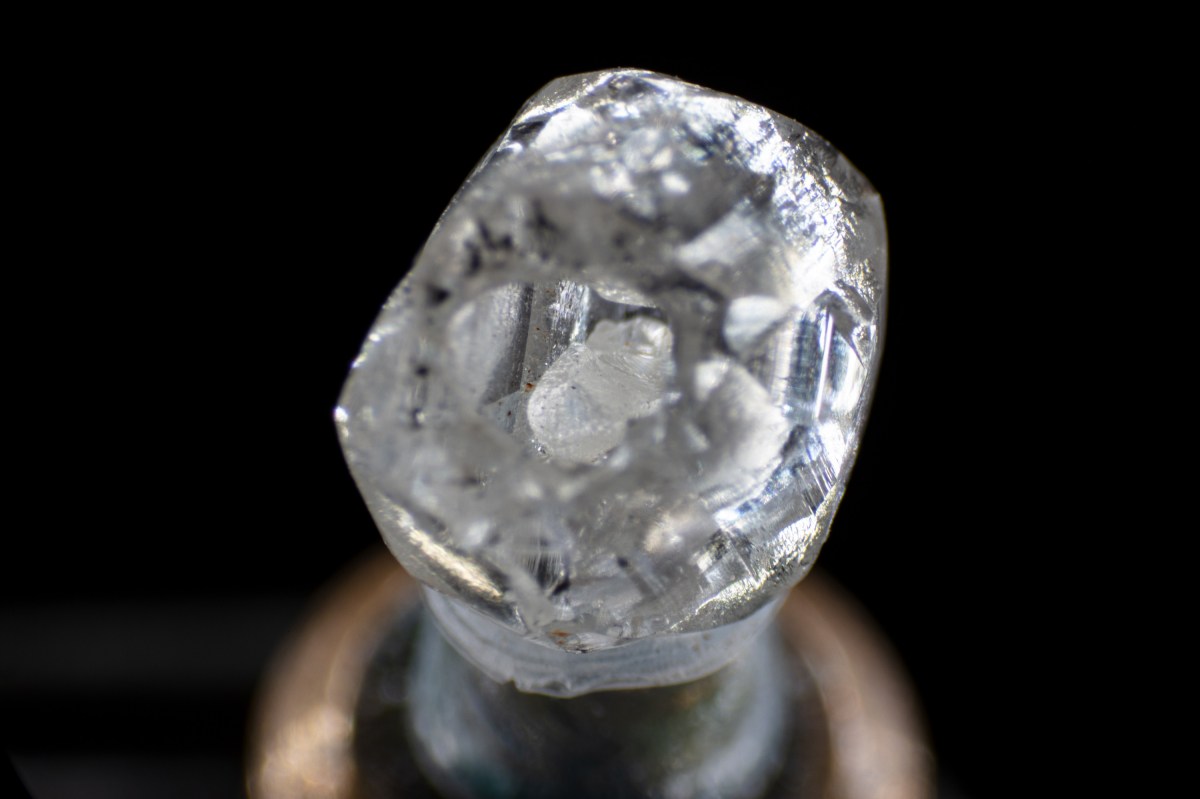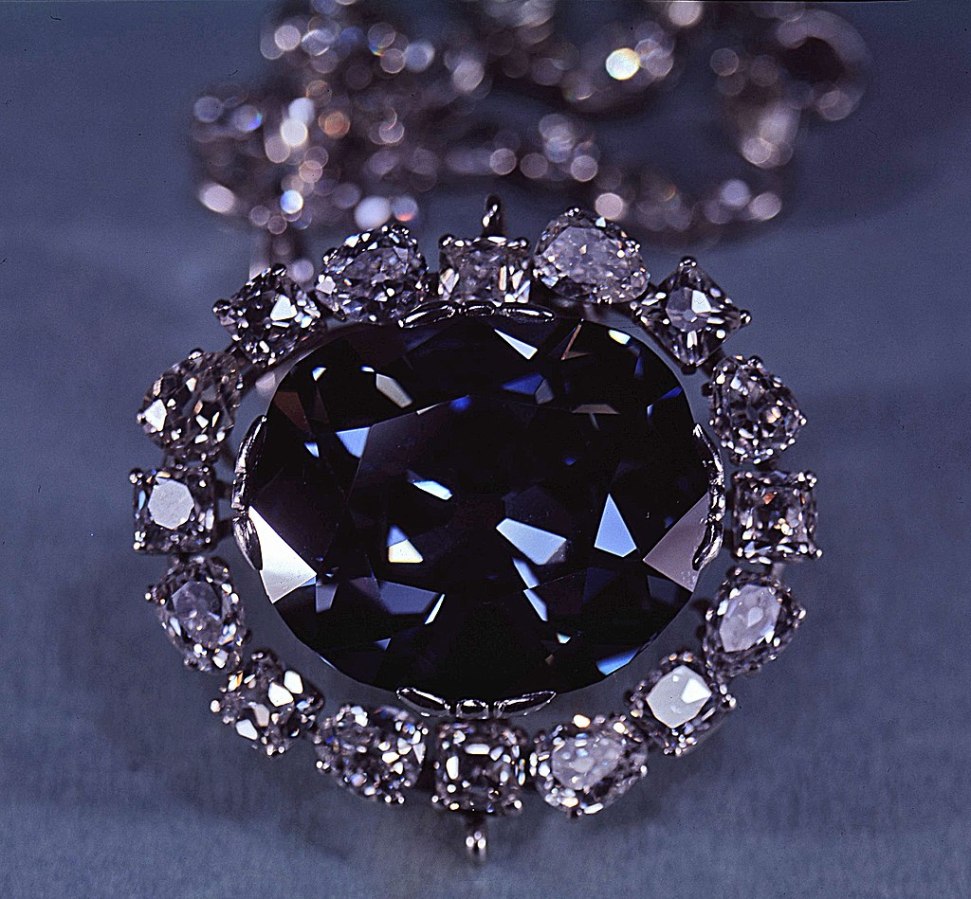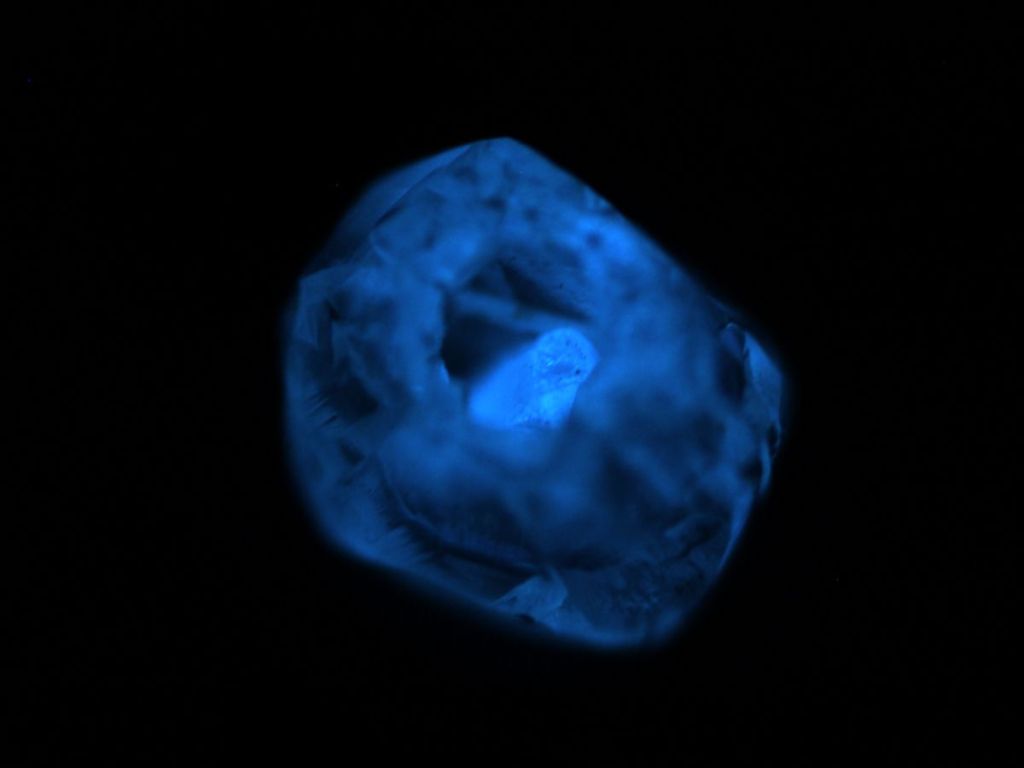A rather weird large diamond, named the “Beating Heart Diamond” has been pulled out of a mine in India. It is likely to catch the attention of the hyper-rich who love one-offs and could spark a posh bidding war if it ever goes to auction. The gem’s journey from mine to private ownership will be recorded on the blockchain, hopefully to prove its ethical handling.
Such wildly scarce rocks are usually immediately sought after by the world’s elites. And this rock has a special feature… it is a diamond inside a diamond shell, and is expected to draw a lot of attention from those with a lot of cash to burn.
Heart of Glass
The Beating Heart Diamond was recently found by the De Beers Group who have mines across the world. A Sightholder (priority buyer who gets first look at the diamonds coming out of a mine), called VD Global, flagged the rough diamond as something of an anomaly worth investigating.
The diamond was found to have an internal cavity. Inside it is a smaller diamond trapped inside. The smaller diamond is free to move around within the space.
Said DeBeers, “Initial conclusions suggest the cavity was formed due to preferential etching of an intermediate layer of poor-quality fibrous diamond. The original ‘core’ would have consisted of good-quality diamond growth. However, a subsequent layer of growth was likely poor and fibrous, followed by a further ‘outer coating’ of gem-quality crystal. At some point between its formation and travel to the surface of the Earth, the poor-quality layer etched away. Only the better quality material ‘survived’ this process — the outer diamond and the core — which, in this case, led to a diamond that can freely move around within an inner space.”

Samantha Sibley is a Technical Educator at De Beers. She said, “I have certainly never seen anything like the ‘Beating Heart’ during my last 30 years in the diamond sector.”
To the blockchain
The ‘Beating Heart’ has been registered on the Tracr blockchain platform. This is an immutable record of a diamond’s provenance and journey of production. Anyone who scans the below QR codeTracr can find out information about the stone.

Why is the life of a diamond recorded on the blockchain? Because in some of the countries where mining takes place, some human rights are abused and miners can work in unsafe conditions.
Blockchain technology promises to bring transparency to supply chains from mines. This is by using the same algorithm as cryptocurrencies, and it is used to trace the journey of products from the mine-mouth to the finished retail product.
Blockchain use is seen as a positive step for miners. Precious stone companies can face pressure from investors and customers to produce products free of slavery and environmental degradation.
Blockchain use is in its infancy and the supply chain is complex, so while it isn’t a perfect system yet, there is hope that it can be a safety net in the future.
Matryoshka Diamond
The ‘Beating Heart’ does have a predecessor. The Matryoshka Diamond from Siberia, Russia, was found in 2019. It is a double diamond, with a second diamond moving freely inside it. The stone is reminiscent of a traditional Russian Matryoshka doll.
In 2021, a double diamond was also unearthed from an Australian mine in Western Australia.
Will the Beating Heart Diamond be sold?
DeBeers say that the Beating Heart Diamond will not be cut and polished, but will be kept for research and educational purposes.
Jamie Clark is the Head of Global Operations at De Beers Institute of Diamonds. He said, “A find like this demonstrates why natural diamond formation and origin is such a fascinating area of study and why it is important to strive for advancements in testing and analysis that can contribute to our knowledge of natural diamond growth.”
Other famous diamonds
Ultra wealthy humans love owning totally unique items. Probably the most famous unique diamond in the world is the Hope Diamond, an incredibly rare stone with exceptional color and clarity.

The extraordinary stone is a 45.52 carat dark blue gem from India. It has a wild reputation that spans four centuries. It is said that anyone who owns it finds themselves engulfed in tragedy, and still, across its life, the ultra-wealthy seemed willing to risk it all in return for ownership of the Hope Diamond.
At the start of its history, it is thought that a French merchant sold the Hope Diamond to King Louis XIV in 1668. In the midst of the French Revolution in 1792, while Louis and Marie Antoinette tried to flee France, the rock was stolen.
By the 1800s, King George IV of England had acquired the stone, and it was sold at his death in 1830 to help pay his debts which had grown robustly since he purchased the gem.
Currently, the Hope Diamond rests at the Smithsonian National Museum of Natural History in the United States. New York jeweler Harry Winston donated the diamond to the museum in 1958. He had bought it from the estate of Evalyn Walsh McLean. She was a socialite and the last private owner of the diamond. Strangely, after buying the diamond, two of her children died and her husband was committed to a mental institution.
Today, the Hope Diamond is one of the most popular exhibits at the Smithsonian.
Koh-i-Noor Diamond
Another wildly famous gem is the Koh-i-Noor diamond, one of the largest cut diamonds in the world. It is currently part of the Crown Jewels of the United Kingdom. The diamond has a controversial history and there are multiple legends surrounding its origin.

The first verifiable record of the diamond comes from the 1740s invasion of Northern India, where the rock was looted. The diamond then changed hands between various empires in south and west Asia. After that, it was acquired by Queen Victoria after the British East India Company’s annexation of the Punjab in 1849.
The stunning diamond is now on display in the Jewel House at the Tower of London. The governments of India, Iran, Pakistan, and Afghanistan, as well as the Taliban, have all claimed ownership of the gem. The British government, however, says the gem was obtained legally.
Future of diamonds
Hopefully in the future, we will see precious rocks that have proof of their ethical origins, recorded on the blockchain. And with some luck, they won’t come with a backstory of curses and skullduggery.



